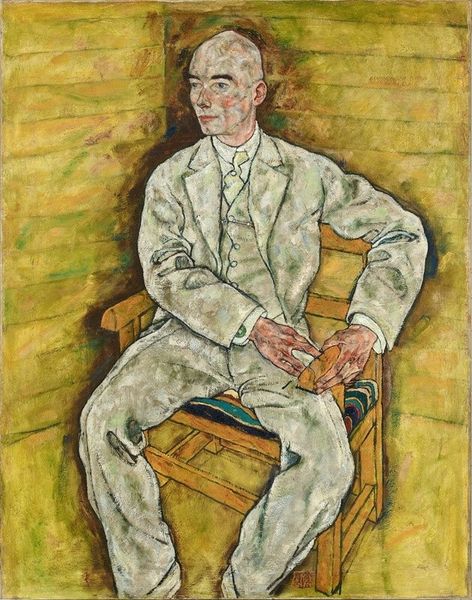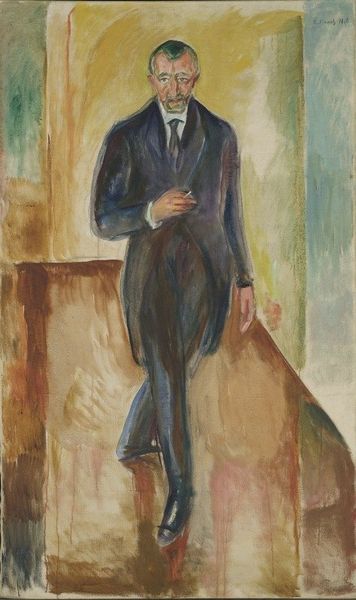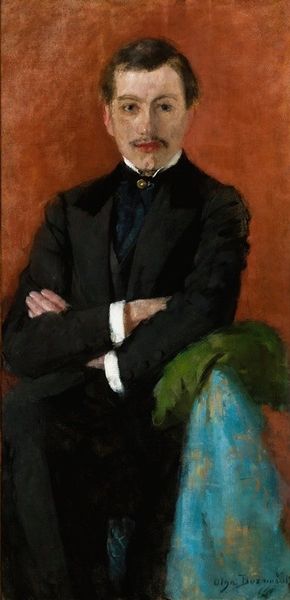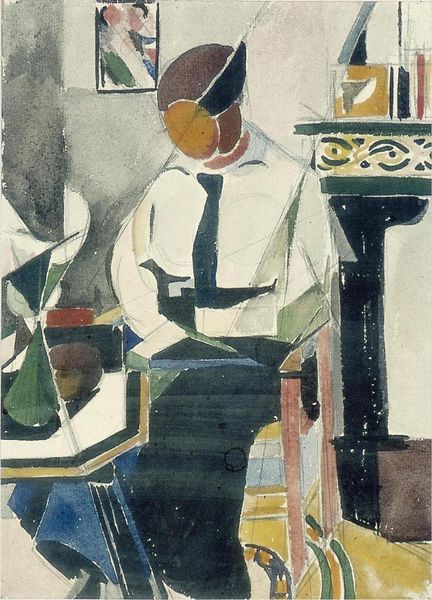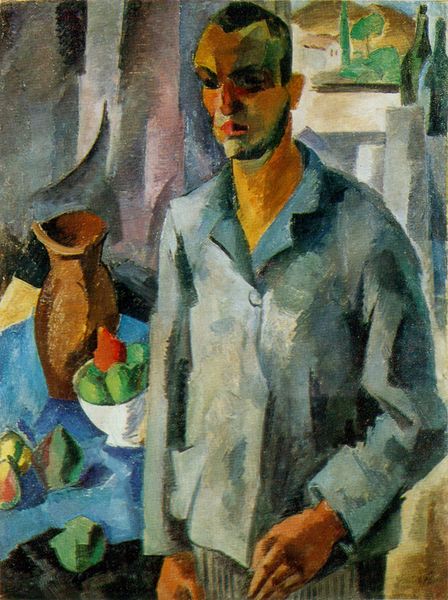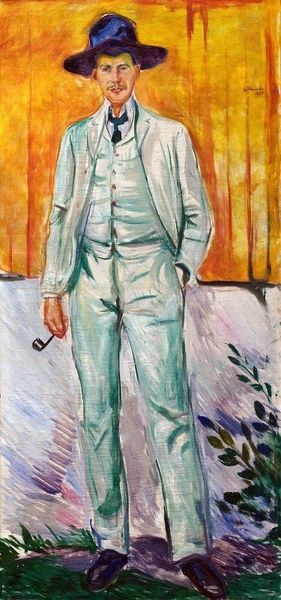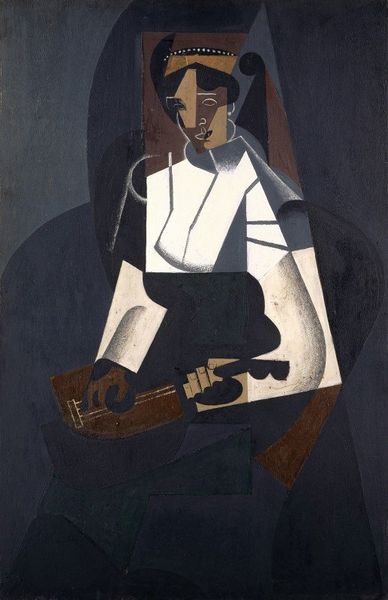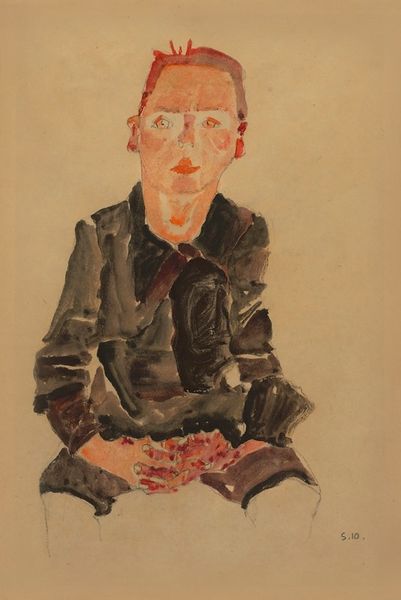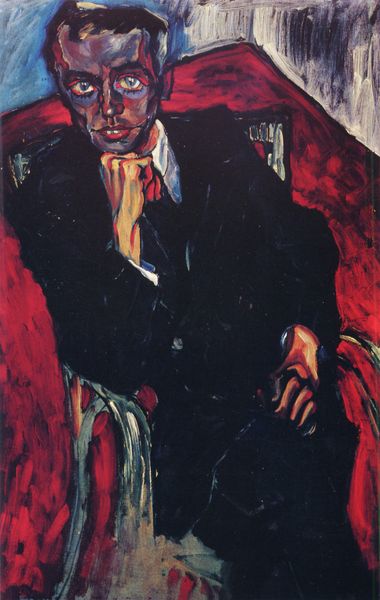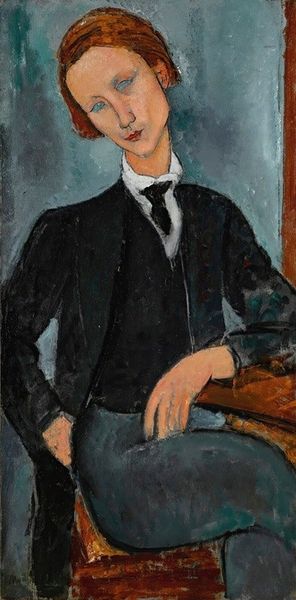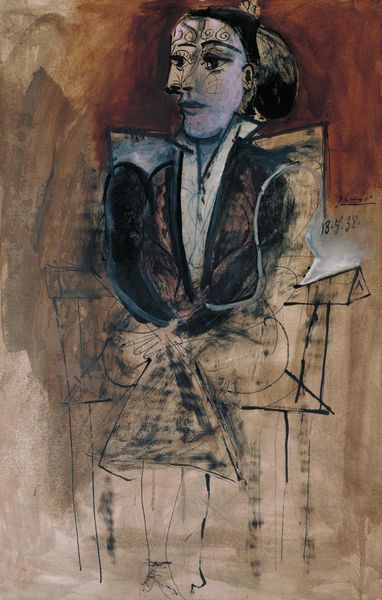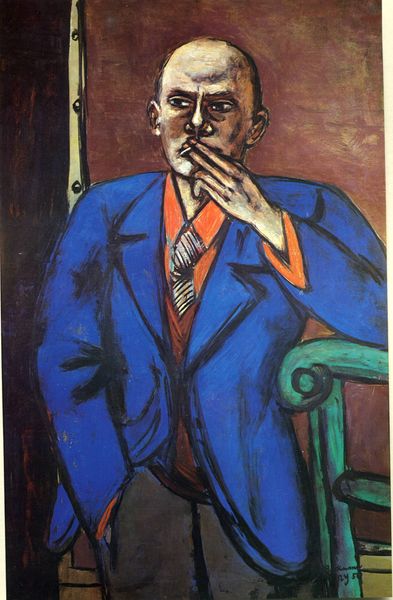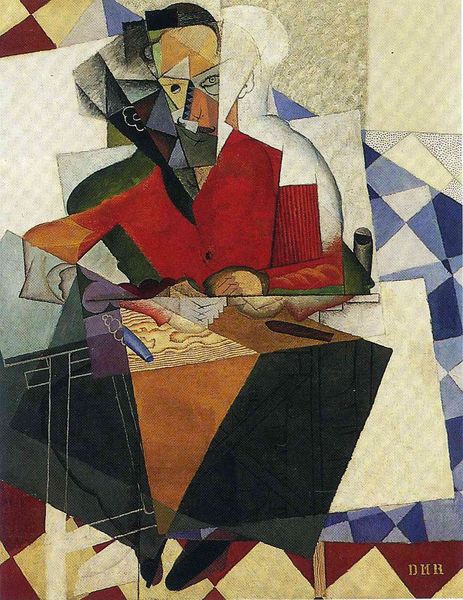
oil-paint
#
portrait
#
cubism
#
oil-paint
#
oil painting
#
geometric
#
line
#
portrait art
#
modernism
Copyright: Anatol Petrytsky,Fair Use
Editor: Here we have Anatol Petrytsky's 1929 oil painting, "Portrait of the Writer M. Doleng." I’m struck by the geometric shapes, the fracturing of the figure. It’s almost as if the artist is dissecting the writer's identity. How do you interpret this work in relation to its historical context? Curator: Well, considering it's 1929, this portrait exists within a complex web of artistic and political ideologies. Cubism, as you pointed out with the geometric forms, was already established but was being re-evaluated. Post-revolution, artists in the Soviet sphere were grappling with the role of art – should it serve the revolution directly, or could it explore more abstract ideas? Petrytsky’s fragmentation could be seen as a reflection of the fragmented self in a rapidly changing society. What do you think about the way the artist chose to depict a writer this way? Editor: That's interesting. Perhaps the fracturing reflects the internal struggles of a writer in that era, trying to find their voice amidst societal pressures. I also notice how the colors seem muted, almost melancholic, which adds to the somber mood. Curator: Precisely! The somber palette also speaks to a specific historical moment. Think about the increasing social realism imposed on artists later in the 1930s, a move away from experimentation towards more representational and easily "readable" art that promotes state ideology. Could Petrytsky be subtly resisting such simplification through his cubist portrayal? Editor: That's a great point; it suggests a quiet act of defiance. It really makes me think about the tightrope artists walked during that period. Curator: Exactly! And examining the subject’s profession adds another layer of complexity to the artwork’s socio-political significance. Considering how artists negotiate censorship reveals the social impact of political conditions on their artistic expressions. Editor: It’s fascinating to see how art reflects, or even pushes back against, the prevailing currents of its time. Curator: Indeed. It shows that a seemingly simple portrait can open a window into a world of historical and political tension.
Comments
No comments
Be the first to comment and join the conversation on the ultimate creative platform.
